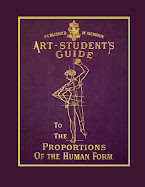



These figure prints are from a rare 17th century volume called
Galleria Giustiniani, a complete record of the antiquities and statues of the famous Giustiniani art collection. The three plus others are for sale on Ebay.
Galleria Giustiniani on EbayThe full text of the book is available on the web at
Sandrart.net.
Here is the information provided by the seller on Ebay:
Joachim von Sandrart was born in 1606 in Frankfurt, Germany and died 82 years later in Nuremberg, Germany. Sandrart's father was a Calvinist who had fled Valenciennes, in the county of Hainaut (then under Spain) to Frankfurt. The younger Sandrart began a career as an artist, studying drawing. In 1620, he moved to Nuremberg, where he learned engraving. In Prague, the engraver Aegidius Sadeler advised him to specialize in painting. Around 1625, he became a pupil of the Dutch painter Gerard van Honthorst in Utrecht. In Honthorst’s house, he met Peter Paul Rubens, whom he accompanied on Rubens' tour through Holland. After working for Honthorst at the English court, Sandrart traveled to Rome in 1629 where he met the artistic and intellectual community there. Between 1632 and 1635, he was employed by Vincenzo Giustiani (1564-1637) as the curator of his collection, which included an impressive number of antiques as well as late sixteenth-century and contemporary paintings. In Giustiniani's service, Sandrart oversaw the production of the Galleria Giustiniani, two deluxe volumes of engravings of ancient sculptures from the Giustiniani collection. Sandrart assembled a team of mostly Dutch and French artists to produce the engravings for the Galleria, including Theodor Matham, Michael Natalis, Renier Persin, Cornelis Bloemaert, Claude Mellan, and Francois Perrier. (19) During his years in Rome Sandrart occupied a position remarkably well connected to both Italian and northern artistic circles; he was initiated as a member of the association of northern artists in Rome, the Schildersbent, and in 1633 was elected to the Roman Academy of St. Luke. Two years after his return to Frankfurt (1635), Sandrart married Johanna Milkau. The Thirty Years War forced them to move to Amsterdam where Sandrart specialized in portrait painting. His clients included the most famous writers and poets, including Joost van den Vondel (1587-1679) and Caspar Barlaeus (1584-1648). In 1645, Sandrart moved to an estate in Stockau, Germany which he had inherited from his father-in-law. He continued to paint, especially large works such as group portraits and altarpieces. Between 1651 and 1653, he worked for Emperor Ferdinand III (1608-1657). In 1670 he moved to Augsburg, and then to Nuremberg in 1673, founding academies in both cities. These art schools probably were studios in which amateurs and maybe Sandrart’s pupils had the opportunity to draw from life (Pevsner, 1940). In this period Sandrart composed his magnum opus, the Teutsche Academie, published in Nuremberg in 1675. A second part appeared in 1679 and an abridged Latin translation followed in 1683. The Galleria Giustiniani is full of engravings of the statues from the exceptional Giustiniani collection of art and antiquities. The Giustiniani brothers' immense wealth (they were scions of a Genoese dynasty that had made its fortune in the Eastern Mediterranean trade and banking); their presence in both the ecclesiastical and secular aristocratic spheres, and their differing but complimentary tastes (the Marchese Vincenzo, who wrote perspicaciously on art and was an especially acute connoisseur), secured them a leading position among their fellow collectors. The inventory made at the time of Vincenzo's death in 1637 detailed nearly 600 paintings and more than 1,800 ancient sculptures. The city guides sang the praise of Vincenzo's extraordinary collection: "There's no other palace in Rome which contains a similarly rich collection of ancient reliefs and statues". The dispersal of the collection began in the 18th century (when, in 1720, a great number of sculptures were sold to Thomas, 8th Earl of Pembroke). Then, at the beginning of the 19th century, Prince Vincenzo Giustiniani sold a few paintings to Lucien Bonaparte. Giustiniani was determined to sell the collection and used every means at his disposal, legal or illegal, to smuggle the paintings out of Rome in defiance of the trust law (the fedecommesso) which prohibited the sale of the collections of the nobility. A number of other noble families in Rome found themselves in similar dire circumstances and were obliged to sell their possessions during the Napoleonic occupation of Rome in order to pay the heavy taxes imposed by the French. The sale of the Borghese collection of antiquities to Napoleon in 1807 is a notable example.
The title page, an engraving of the Athena Sculpture is shown in this print.
Link to an
article about the sculture.
Joachim von Sandrart made two prints showing how to make copies of statuary by tracing shadows cast by lantern or sunlight, they are on a page called
Precursors of Photography by Thomas Weynants.


 Annales du Musée et de l'École Moderne des Beaux-Arts ou Recueil complet de gravures: Galerie Giustiniani (French Edition)
Annales du Musée et de l'École Moderne des Beaux-Arts ou Recueil complet de gravures: Galerie Giustiniani (French Edition)
Wikipedia article on
Vencenzo Giustiniani.
A
youthful Hercules in the Metropolitan Museum.
Italian article,
Christina Strunck -
La sistemazione seicentesca delle sculture antiche
La Galleria Giustiniana e la galleria di palazzo Giustiniani a confronto.
Some more images from the book.
More antique sculpture in prints from philographikon.com.
More prints from the Galleria Giustiniani:
































































